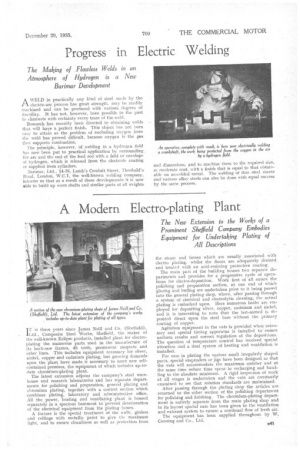Progress• in Electric Welding
Page 51

If you've noticed an error in this article please click here to report it so we can fix it.
AWELD in practically any kind of steel made by the electric-arc process has great strength, may be readily machined and can be produced with varioue degrees of ductility. It has not, however, been possible in the past to eliminate with certainty every trace of the weld, Research has recently been directed to obtaining welds that will have a perfect finish. This object has not been easy to attain as the problem of excluding oxygen from the weld has proved .difficult, because oxygen is the gas that supports combustion.
The principle, however, of .welding in a hydrogen field has now been put to practical application by surrounding. the arc and the end of the feed rod with a field or envelope of hydrogen, which is released from the electrode coating
or sUpplied frOm .cylinders.
Barienar, Ltd., 14-18, Lamb's Conduit Street, Theobald's Road, London, W.C.1, the well-known welding company, informs us that as a result of these developments it is now able to bald up worn shafts and similar parts of all weights
and dimensions, and to machine them to the required sire, at moderate cost, with a finish that is equal to that obtainable on unwelded metal. The welding of thin steel sheets and various alloy steels can also be done with equal success by the same process.




















































































